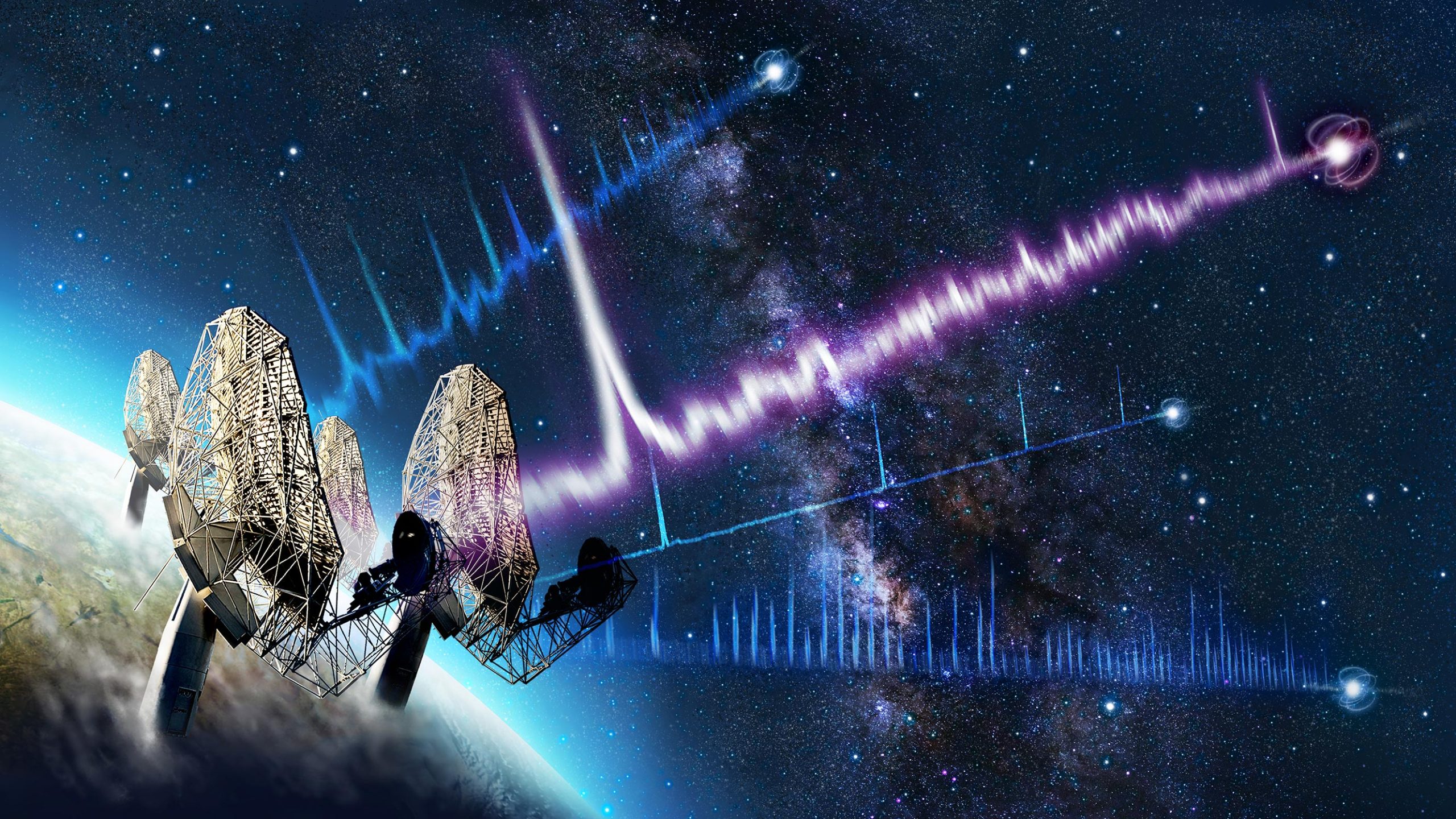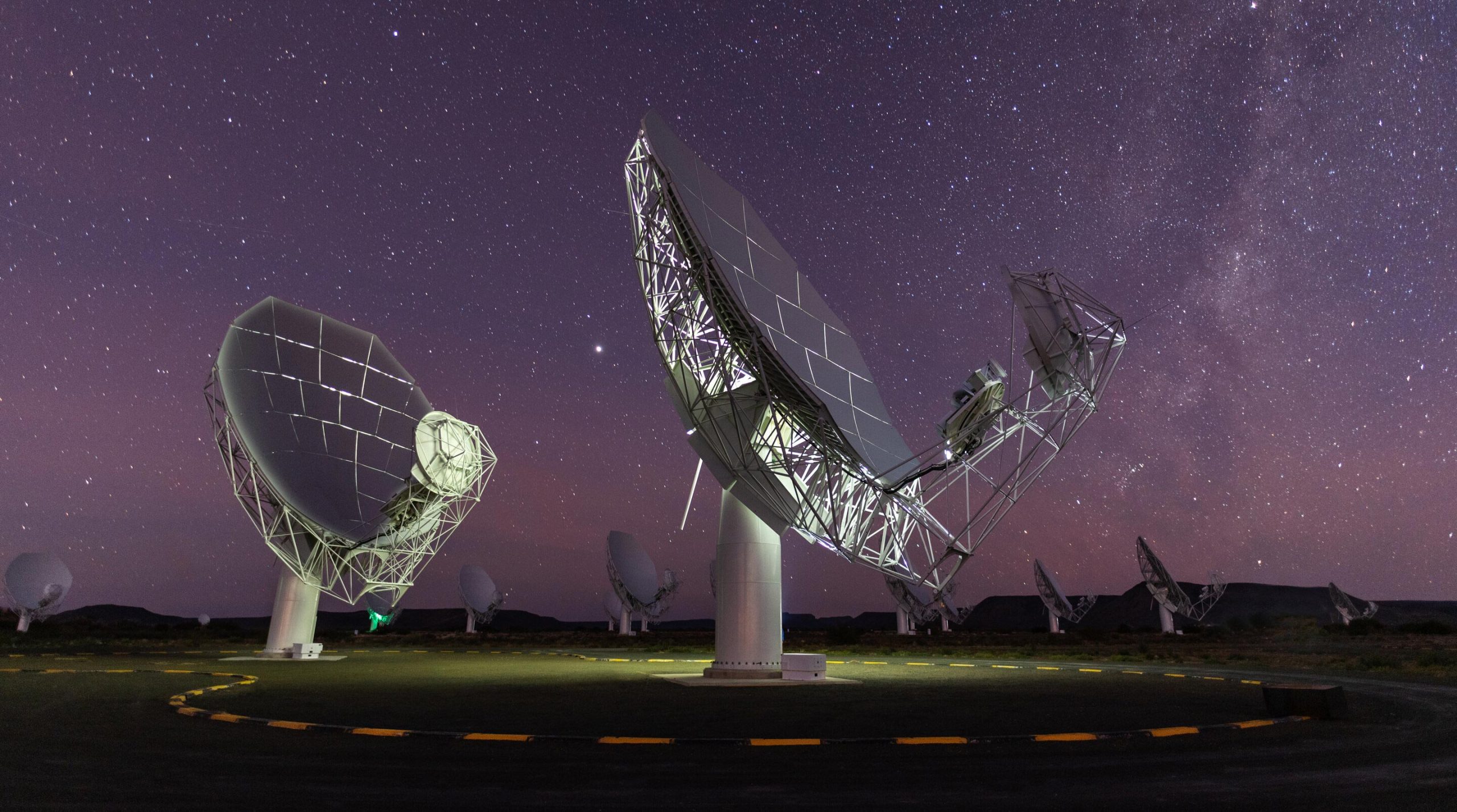Mysterious pulsar spins too slowly with 7 different pulse patterns
Its 76-second pirouette is very lengthy for this kind of star.

A single flash from the sky pointed the way to a bizarre star that rotates very slowly, making it difficult to figure out if it's a pulsar or some other stellar object.
The object, known as PSR J0901-4046, "challenges our current understanding of how these systems evolve" due to its slow pirouette of 76 seconds and the fact that it emits radio waves, both of which are unusual for pulsars, researchers said in a study published Monday (May 30) in Nature Astronomy.
Pulsars are rapidly rotating objects that belong to the family of neutron stars. These are ultra-dense, city-sized objects that are just a little more massive than our sun. They are thought to emerge from powerful supernova explosions of massive stars. But typically, pulsars rotate several times a second.
Related: 50 years ago Jocelyn Bell discovered pulsars and changed our view of the universe
That makes PSR J0901-4046 and its slow pirouette rather strange, and unlike any of the other 3,000 other pulsars found in our Milky Way galaxy. The newly found object may belong to a "theorized class of ultra-long period magnetars with extremely strong magnetic fields," researchers said in a statement Tuesday (May 31).
"It took an eagle eye to recognize it for something that was possibly a real source because it was so unusual looking," Ian Heywood, a radio astronomer at the University of Oxford and collaborator on the research, said in the statement.
Researchers spotted the flash using the MeerKAT radio telescope in South Africa. It was initially spotted under a program called ThunderKAT, which looks for radio transients, and then the researchers brought in expertise from the University of Manchester's MeerTRAP (More Transients and Pulsars) program.
Get the Space.com Newsletter
Breaking space news, the latest updates on rocket launches, skywatching events and more!
Working together, the researchers were able to confirm the pulsar's flash period and estimate its location in the sky, the statement said.
Lead author Manisha Caleb, an astronomer at the University of Sydney, said that the radio emission was only visible for 0.5% of the pulsar's rotation period, making the detection "very fortuitous," she said. "The majority of pulsar surveys do not search for periods this long, and so we have no idea how many of these sources there might be," Caleb added in the statement.

The researchers noted it is difficult to classify this object. While the radio waves suggest it is a pulsar, the polarization of the pulses (along with how the signal fluctuates) points more to it being a magnetar, another neutron star type which has powerfully strong magnetic fields greatly affecting their local environments.
The star appears to pulse in at least seven different ways, which might indicate changes in seismic activity within the star, but researchers aren't quite sure what to make of what they are seeing.
Also, the slow spin of 76 seconds is more reminiscent of an ordinary white dwarf, which is the cooling core of a star about the size of our sun that sloughs off its outer layers once it runs out of fuel for nuclear fusion. But scientists don't see the right signal in the star's spectrum to suggest it is indeed a white dwarf.
More data might be needed, the researchers said, to better classify what they are seeing. They aren't sure, even, how long the radio emissions have been happening, since although the object is located in a well-studied neighborhood, radio signals don't usually detect this type of signal.
"It is therefore likely that there are many more of these very slowly spinning sources in the galaxy, which has important implications for how neutron stars are born and age," Caleb said.
Follow Elizabeth Howell on Twitter @howellspace. Follow us on Twitter @Spacedotcom and on Facebook.
Join our Space Forums to keep talking space on the latest missions, night sky and more! And if you have a news tip, correction or comment, let us know at: community@space.com.

Elizabeth Howell (she/her), Ph.D., was a staff writer in the spaceflight channel between 2022 and 2024 specializing in Canadian space news. She was contributing writer for Space.com for 10 years from 2012 to 2024. Elizabeth's reporting includes multiple exclusives with the White House, leading world coverage about a lost-and-found space tomato on the International Space Station, witnessing five human spaceflight launches on two continents, flying parabolic, working inside a spacesuit, and participating in a simulated Mars mission. Her latest book, "Why Am I Taller?" (ECW Press, 2022) is co-written with astronaut Dave Williams.
